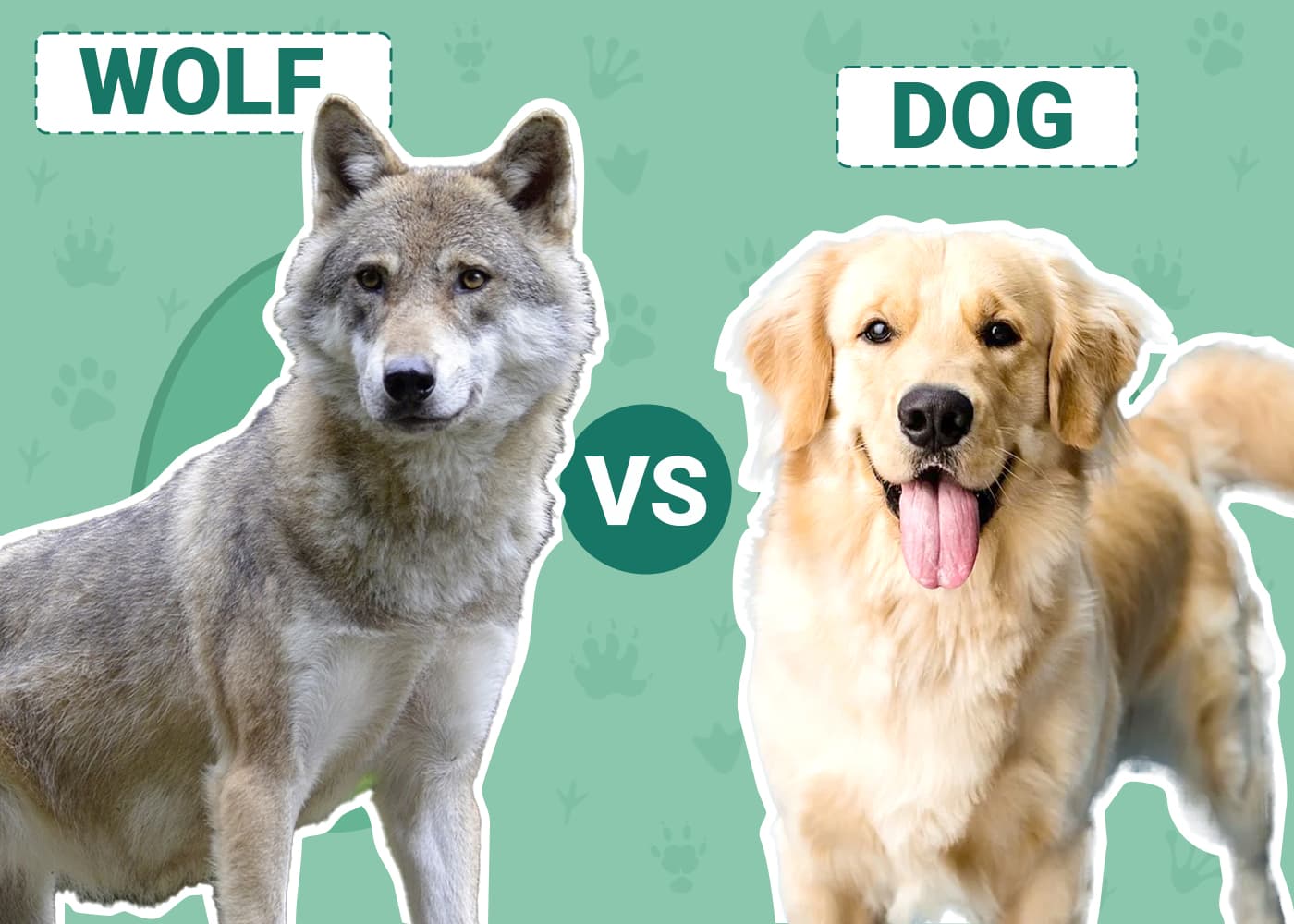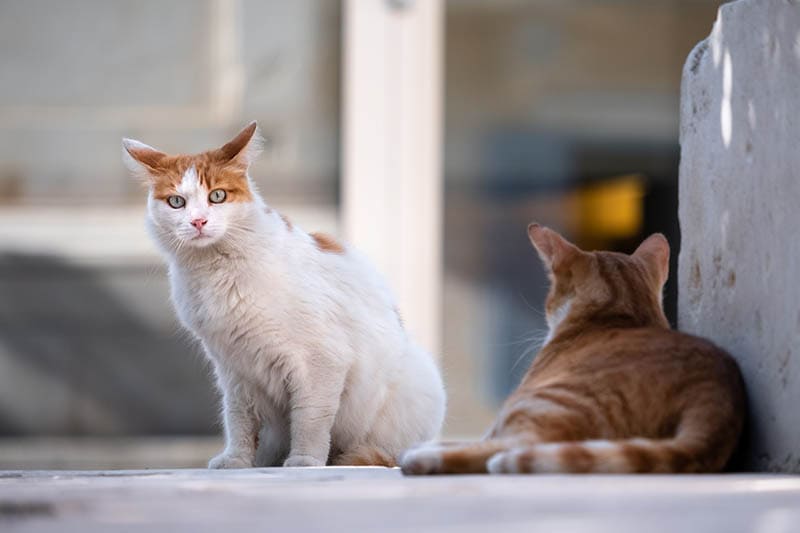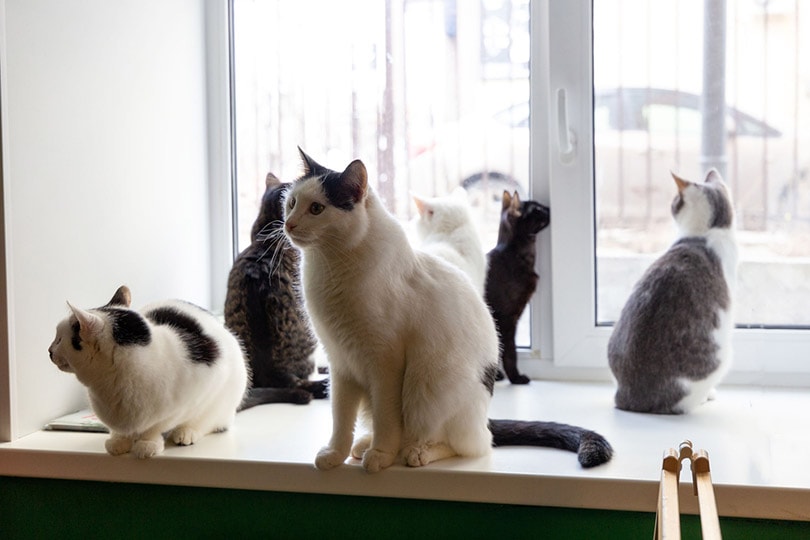Dogs and cats have been our best friends for centuries now. These loyal, loving, caring, and playful creatures are a household staple in the US and across the world. In fact, 38.4% of homes in America own at least one dog, and 25.4% own at least one cat.1 For some households, these pets are actual family members, appearing in family photos and going on vacation with the rest of the family.
But did you know that dogs and cats weren’t always household pets? While it may seem that our furry friends always belonged within the confines of our AC-fitted, well-insulated, and furnished homes, their original home was the wild. Dogs were originally wolves that scavenged for food scraps from humans, while cats were wild cats in the jungle and deserts. But between dogs and cats, which ones were domesticated first?
Archeological evidence shows that dogs were the first to be domesticated around 30,000 years ago. This means they were domesticated well before horses, sheep, and cats. Keep reading to find out more about the domestication of our furry friends: the cat and the dog.
The Domestication of Dogs
As mentioned earlier, dogs were among the first animals to be domesticated around 30,000 years ago. Dogs derive from wolves, but how did humans turn these vicious hunters into loving companions that love to cuddle on the couch and play fetch? The answer is quite simple: food.
Thanks to improved tools, humans became better at hunting and gathering and were able to get enough food for themselves and have a lot left over. The wolves got used to feeding on the bones and scraps that humans left over. It was easy food and doing so saved them a lot of energy they would use to hunt prey in the wild.
Over time, they became accustomed to humans and eventually became best friends. Dogs genetically split from wolves about 36,900 and 41,500 years ago, with dogs from the eastern and western parts doing so around 17,500 and 23,900 years ago.

How Are Dogs and Wolves Different?
Dogs and wolves share up to 99% of their DNA. It’s clear that dogs evolved from wolves, but how different are these two creatures?
1. Larger Skull and Stronger Jaws
Dogs and wolves have the same number of teeth, but the wolf’s skull is much larger and has stronger jaws. Unlike dogs that are fed on dog food and scraps of human food, wolves have to hunt for their meal. As such, they require large, strong jaws to crush bones and bite their prey to incapacitate them.
Wolves also have larger feet, with large middle toes compared to their side toes. This allows them to spring almost instantly off their toes and quickly pursue prey. They also have longer ankles for the same reason.
2. Shy and Avoid People
Contrary to popular belief, wolves aren’t out to kill you on sight. Instead, they’re shy and docile creatures that will run away once they spot a human.
This is a stark difference from dogs that run to embrace their owners on sight. While dogs love spending time around humans, wolves will do their best to avoid them.
3. Wolves Mature Faster Than Dogs
Wolves mature a lot faster than dogs, even though both canines wean at about eight weeks. Researchers concluded that young wolf pups are able to solve puzzles much earlier than dog pups. This makes sense, given that they have to survive in the wild, which is more demanding than the confines of a home.
4. Wolves and Dogs Breed Differently
Dogs are active breeders, breeding several times a year. Wolves, on the other hand, only breed once a year. What’s more, dogs have larger litters of about five to six pups, while wolves have a maximum of five pups. The abundance of food and other resources means that dogs can breed freely and sustain their litters. It’s hard to say the same about wolves.
5. Carnivores vs Omnivores
Wolves stick to a strict diet of meat, hunting prey like deer, elk, and rodents. Spinach is an absolute no-no for wolves, while your dog will happily chow down your left-over salad. Furthermore, wolves eat a lot of food at once because the next meal isn’t always guaranteed. Dogs only eat enough food to sustain them until the next meal, which is only a few hours away.

The Domestication of Cats
There’s still much debate over whether cats were even domesticated in the first place, but all cats have a common ancestor, the North African or Southwest Asian wild cat. Archeological evidence shows that cats were domesticated around 12,000 years ago during the Neolithic period.
Studies of skeletal remains in China also show the domestication of leopard cats, although there’s no correlation between today’s household cats and the leopard cats of the same period. Cats were domesticated to keep rodents and other pests away from the food they planted and gathered. Much later, sailors and explorers took cats on their ships to get rid of rats on board, and that’s how they spread across the world.
Cats were domesticated later than dogs because they weren’t that useful. Dogs could hunt and protect humans from intruders and wild animals. Cats were kept to keep rodents away after humans had gathered enough food for storage.

Differences Between Wild and Domestic Cats
There’s not much that splits wild cats from household cats. For starters, they look pretty much the same and also share the same diet. So, what’s the difference between wild and domestic cats?
1. Attitude
Wild cats are pretty aggressive and are excellent hunters. Domestic cats, on the other hand, are a lot more docile and super friendly to humans. It’s never a good idea to try to pet a wild cat unless you want to get painful scratches and equally painful rabies shots.
2. Coat and Markings
Wildcats have sandy and yellow-gray coats with black stripes. This helps them to blend into the environment and hide while stalking prey. House cats come with different coats that don’t serve a specific purpose for their survival.
3. Larger Than Domestic Cats
Being active in the wild has given wild cats a slightly larger build than household cats. Wild cats are always hunting for prey, making their bodies leaner and more muscular. Although some housecats can be huge, wild cats are still larger on average.
Rodents and birds are pretty fast and can easily outrun predators. Wild cats have longer legs that give them greater strides to chase after and capture prey. Cats have shorter legs making them less agile.
4. Longer Tails
Wildcats have much longer tails to help them keep balance while climbing up trees in search of prey. Since household cats don’t hunt that much, they’ve developed shorter tails to give them just enough balance for their day-to-day trivialities.

Final Thoughts
Cats and dogs have come a long way to become the cute and loving pets we own today. Dogs were clearly domesticated first because of their utility, and cats came later. If you’re keen enough, you might notice some subtle traits that your cat and dog share with their ancestors.
Featured Image Credit: Pencil case, Shutterstock











